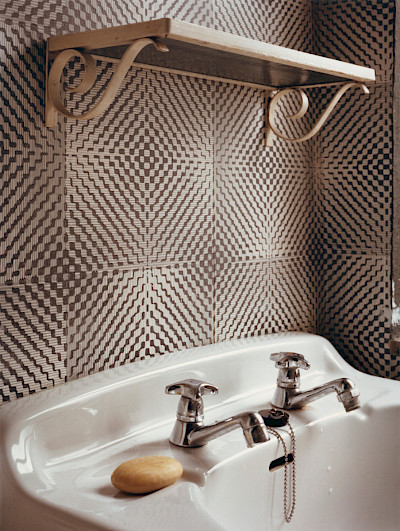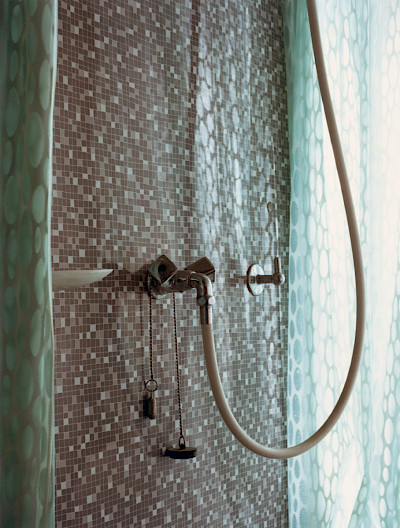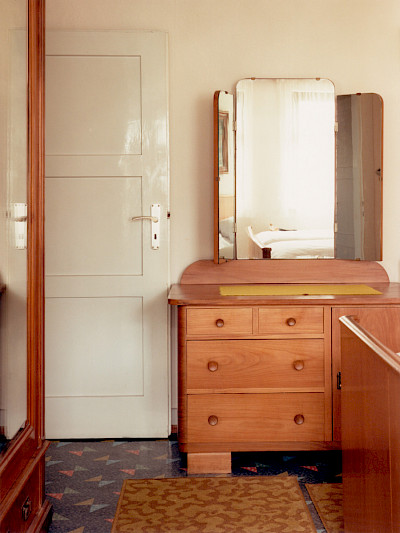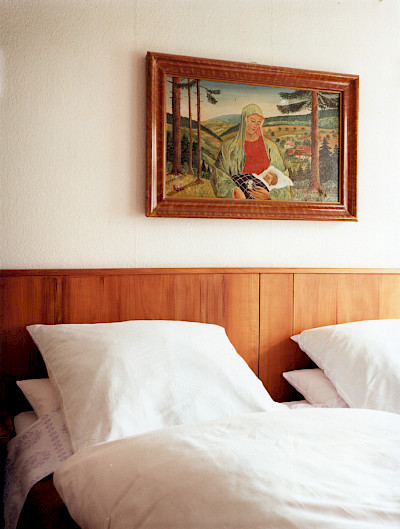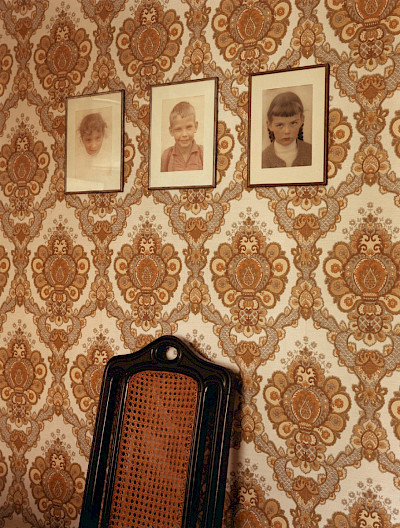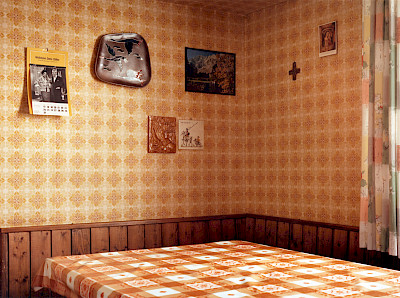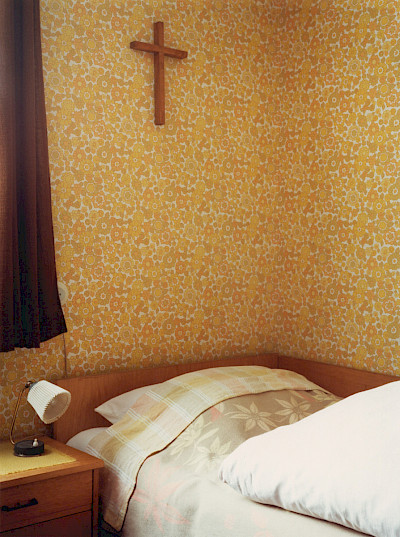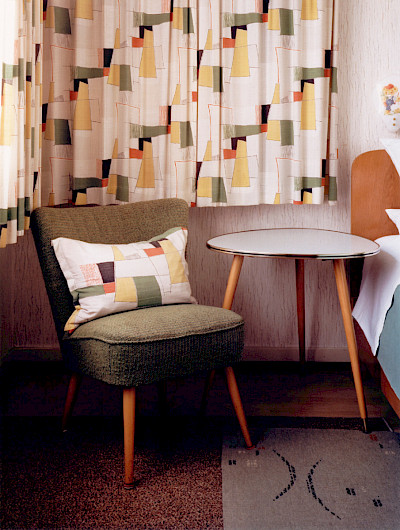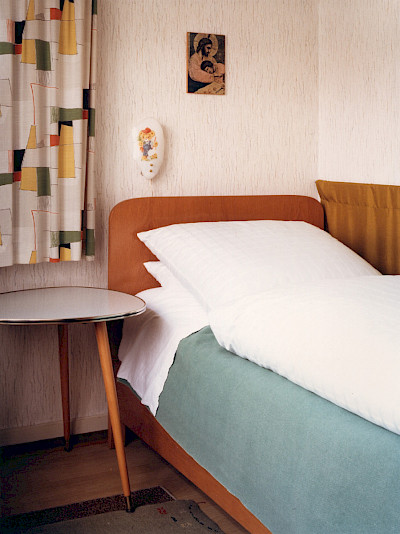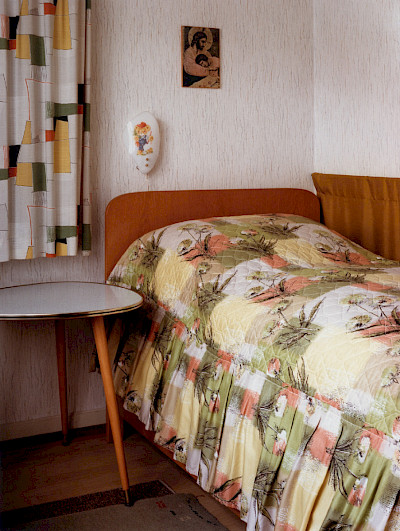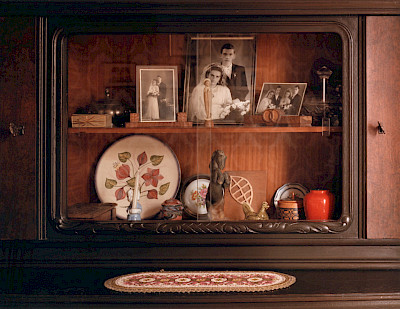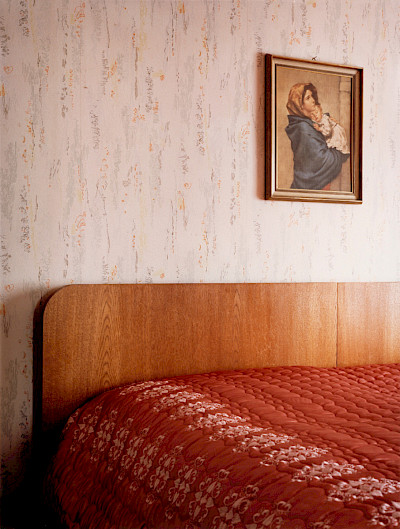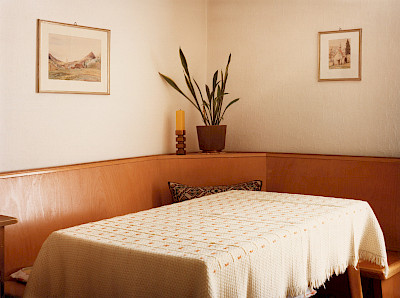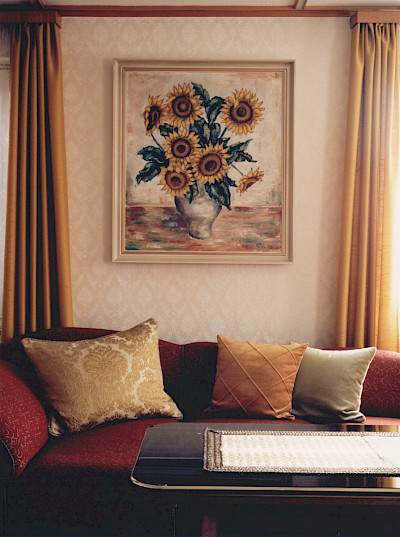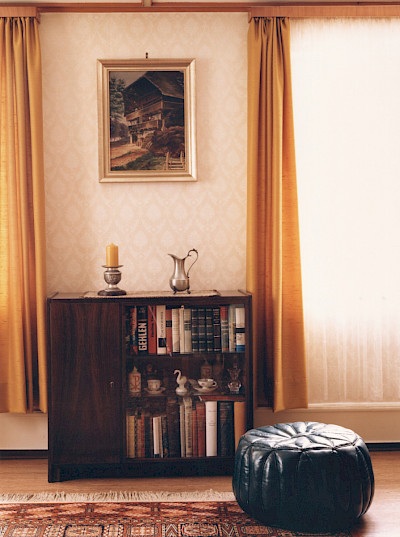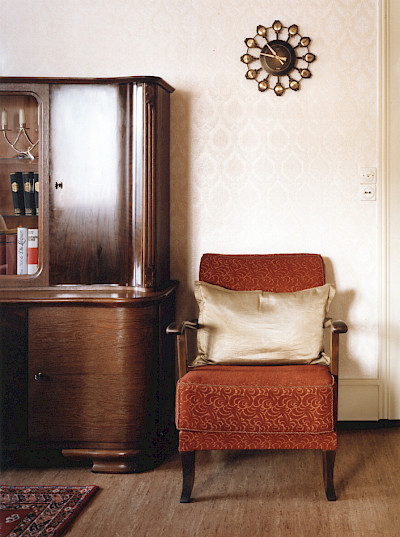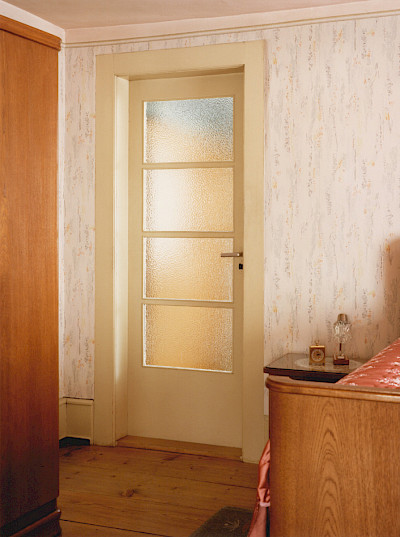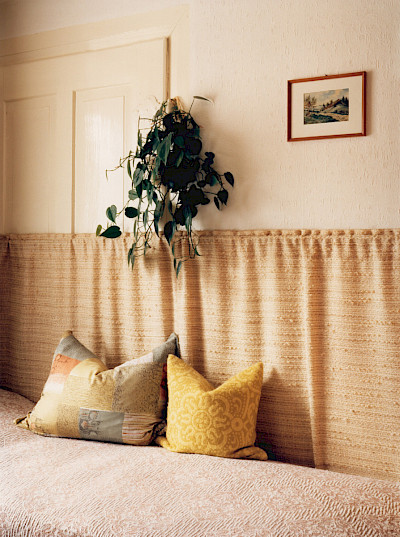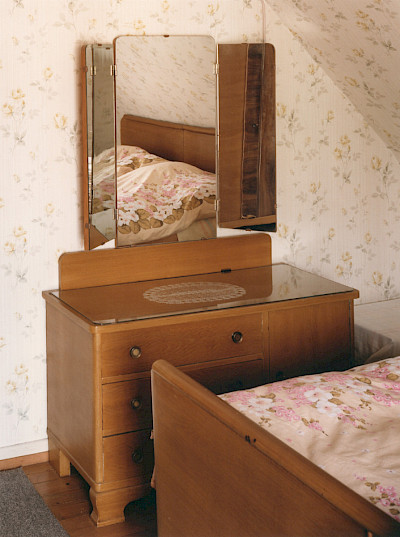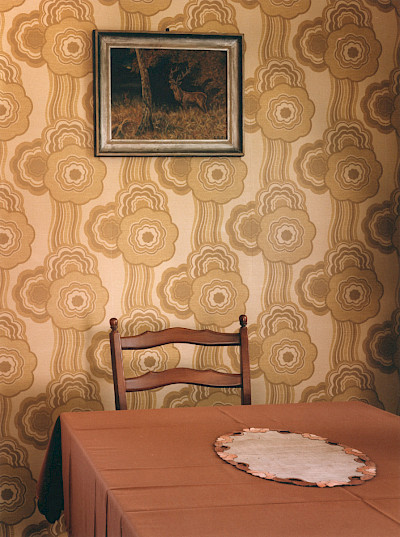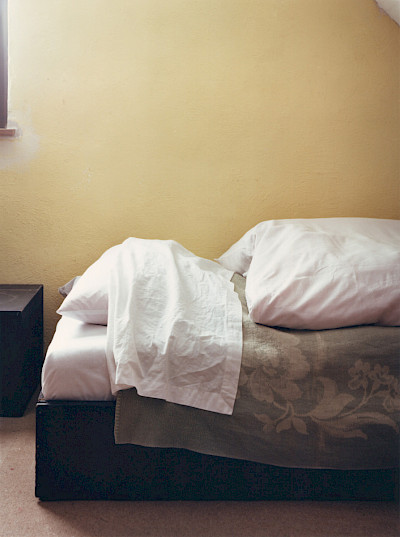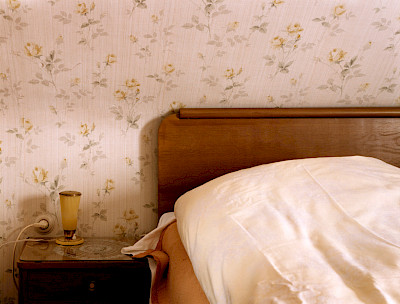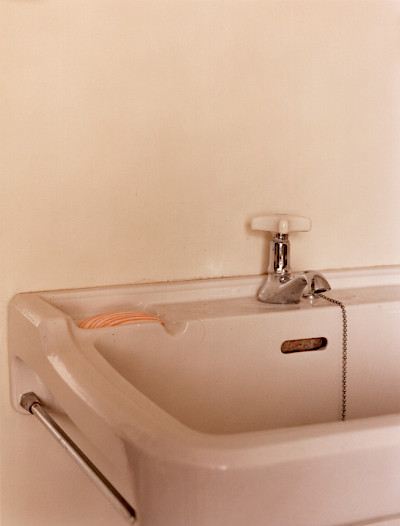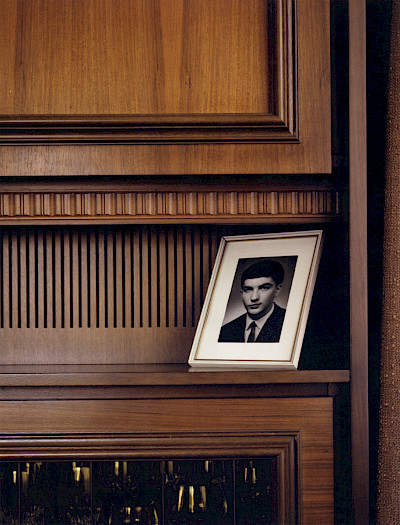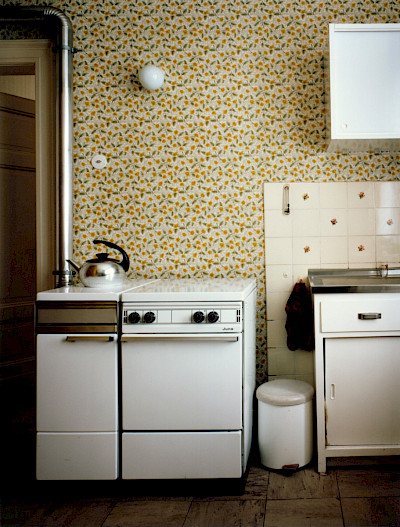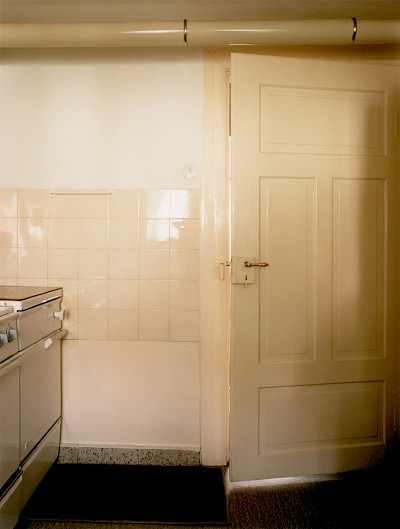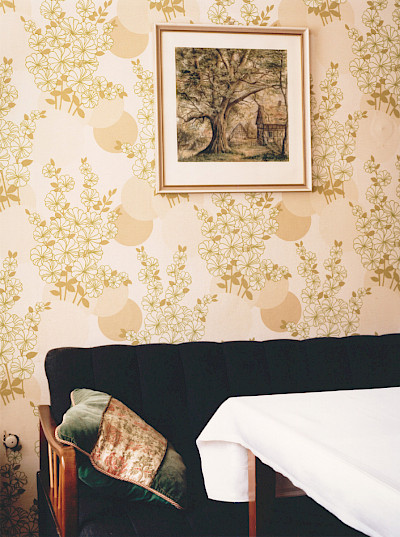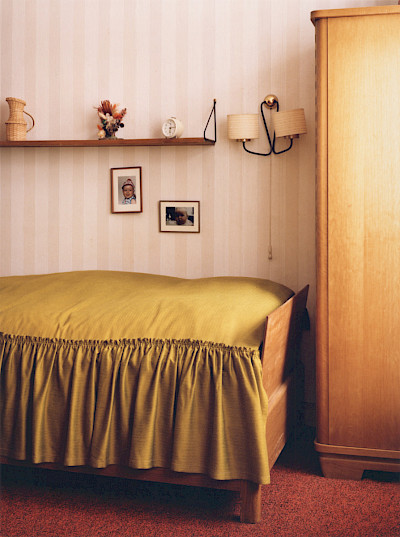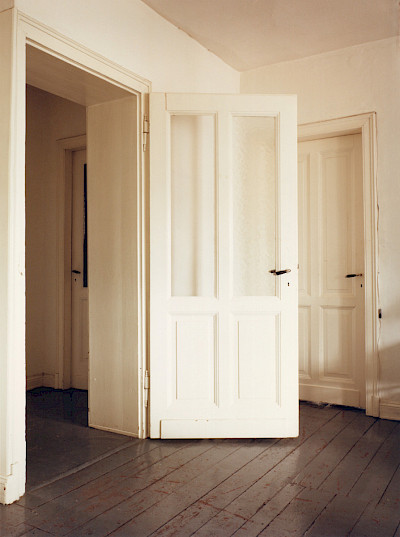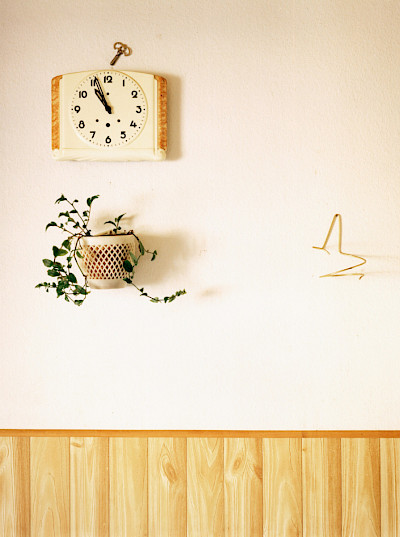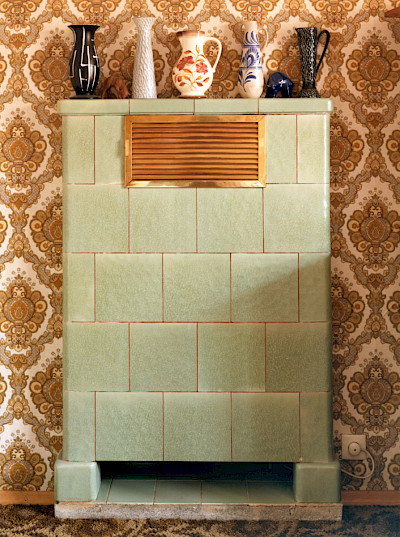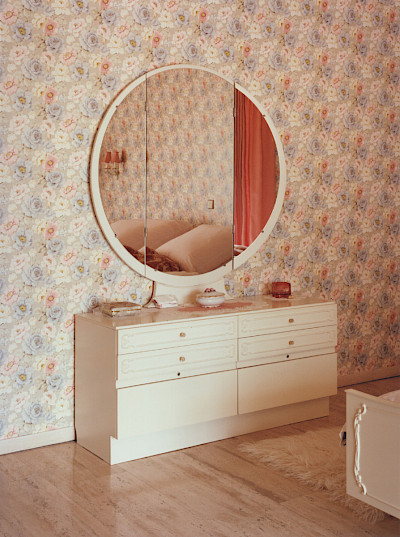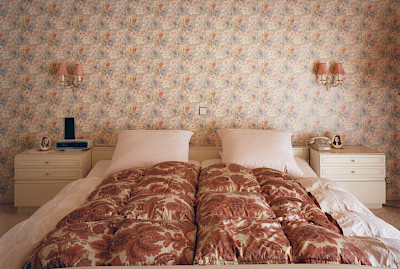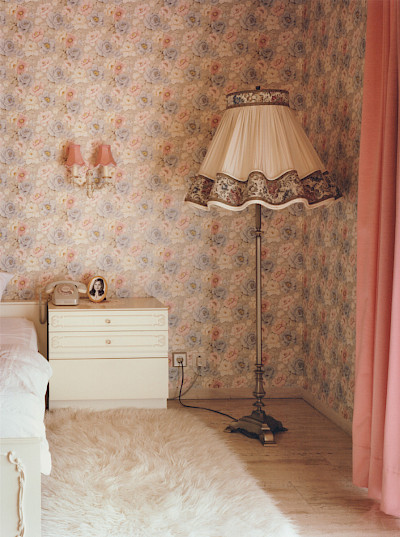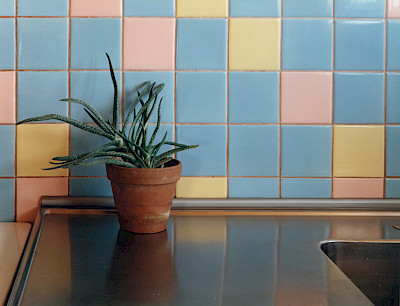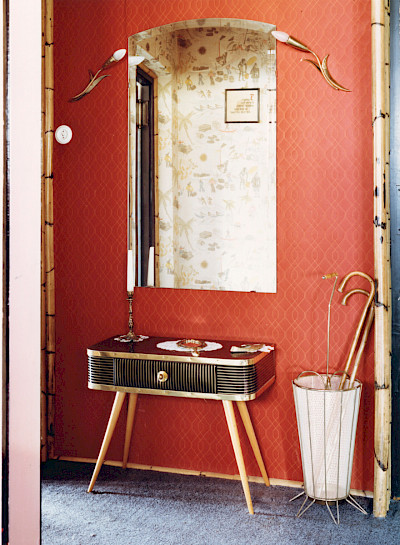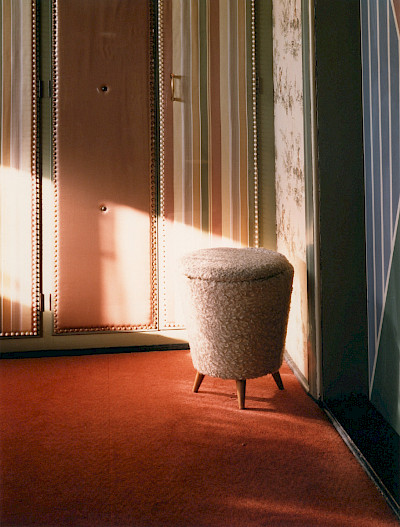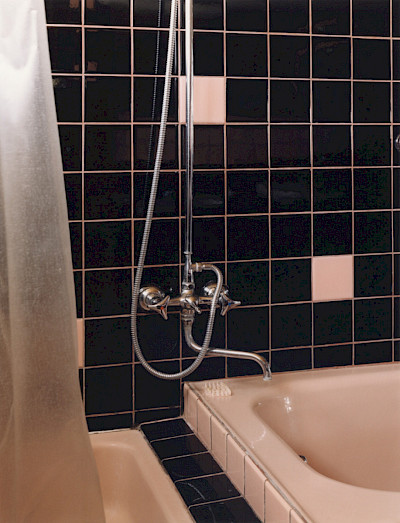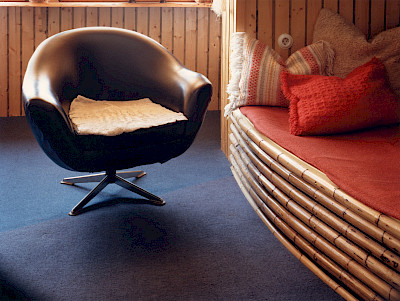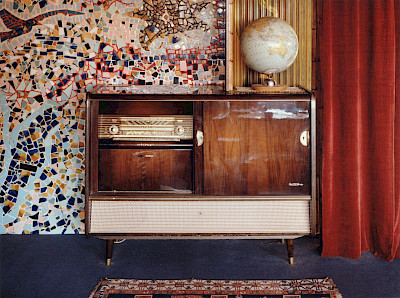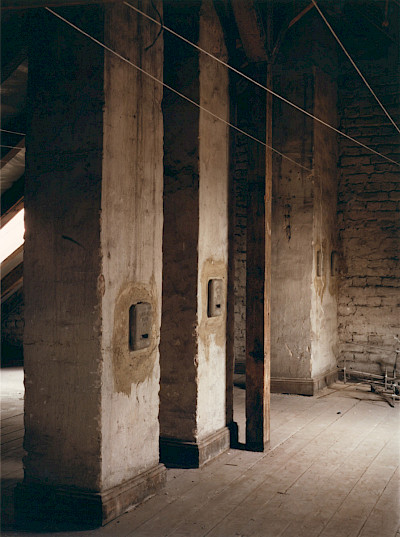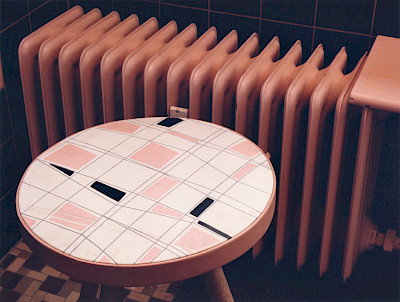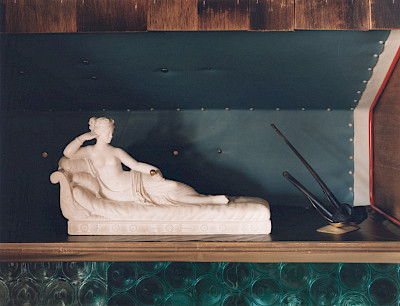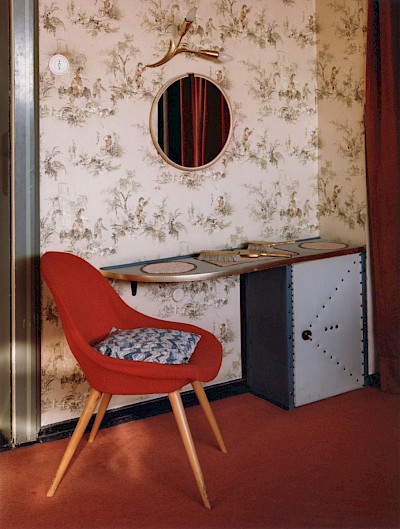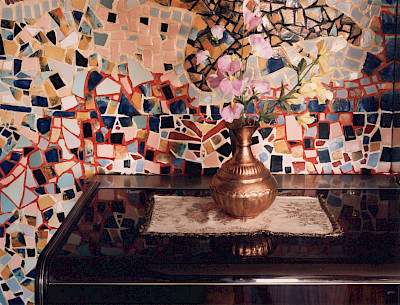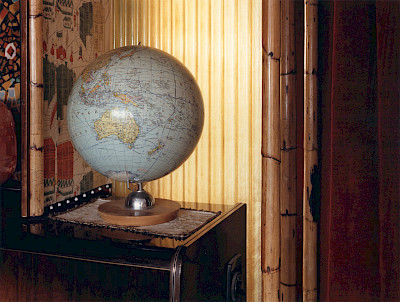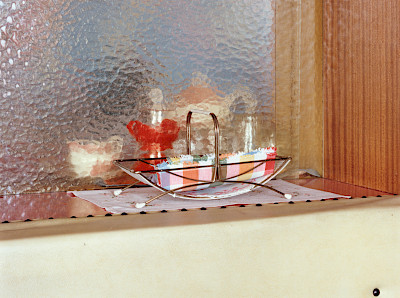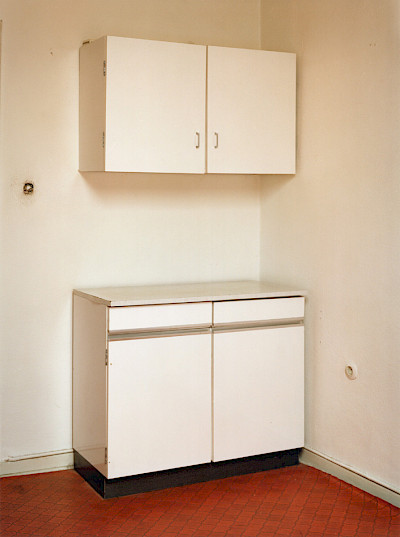Interiors
Fascinated by photographs by Eugène Atget and Walker Evans, which Thomas Ruff became acquainted with through Bernd Becher, he decided to make photographic studies of the domestic world in which his own generation had grown up and lived. Alongside detailed shots of his own apartment in Düsseldorf taken during countless trips to see his family in the Black Forest, he photographed various interiors that he had known since his youth: rooms in his parent’s house, in relatives’ apartments, and in the homes of the parents of some of his friends from school. He later expanded the locations chosen to include interiors that corresponded to those encountered in the Black Forest and which he discovered visiting friends and acquaintances.
He set himself the goal of creating images that would show what was characteristic about these rooms. On the one hand, each photo was meant to be as factual as possible and to reproduce the details of the room in a distant manner; on the other hand, the choice of cropping was intended to summarize the room’s atmosphere and character as its essence, as it were. For this reason, Ruff often photographed the views exactly as he found them—with the existing natural light and without changing the furnishings in any way.
He discontinued the series in 1983 since most of the apartments belonging to his relatives and acquaintances were modernized in the early 1980s and brought into line with the style of the day.

Interiors
Fascinated by photographs by Eugène Atget and Walker Evans, which Thomas Ruff became acquainted with through Bernd Becher, he decided to make photographic studies of the domestic world in which his own generation had grown up and lived. Alongside detailed shots of his own apartment in Düsseldorf taken during countless trips to see his family in the Black Forest, he photographed various interiors that he had known since his youth: rooms in his parent’s house, in relatives’ apartments, and in the homes of the parents of some of his friends from school. He later expanded the locations chosen to include interiors that corresponded to those encountered in the Black Forest and which he discovered visiting friends and acquaintances.
He set himself the goal of creating images that would show what was characteristic about these rooms. On the one hand, each photo was meant to be as factual as possible and to reproduce the details of the room in a distant manner; on the other hand, the choice of cropping was intended to summarize the room’s atmosphere and character as its essence, as it were. For this reason, Ruff often photographed the views exactly as he found them—with the existing natural light and without changing the furnishings in any way.
He discontinued the series in 1983 since most of the apartments belonging to his relatives and acquaintances were modernized in the early 1980s and brought into line with the style of the day.






